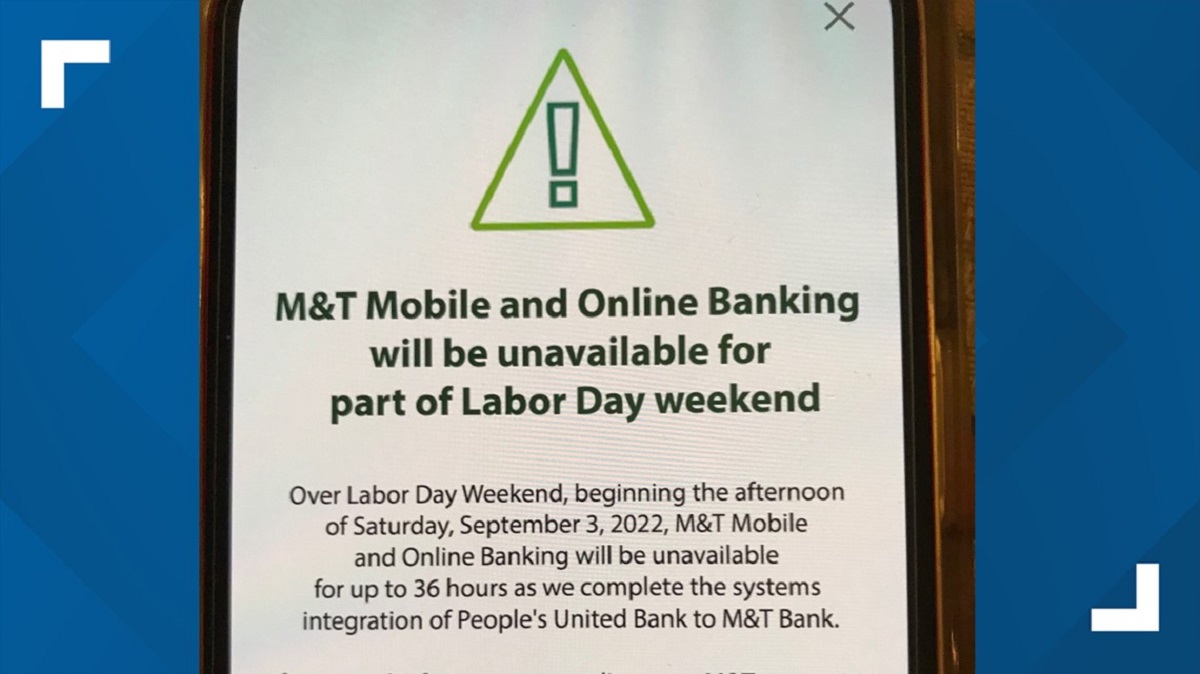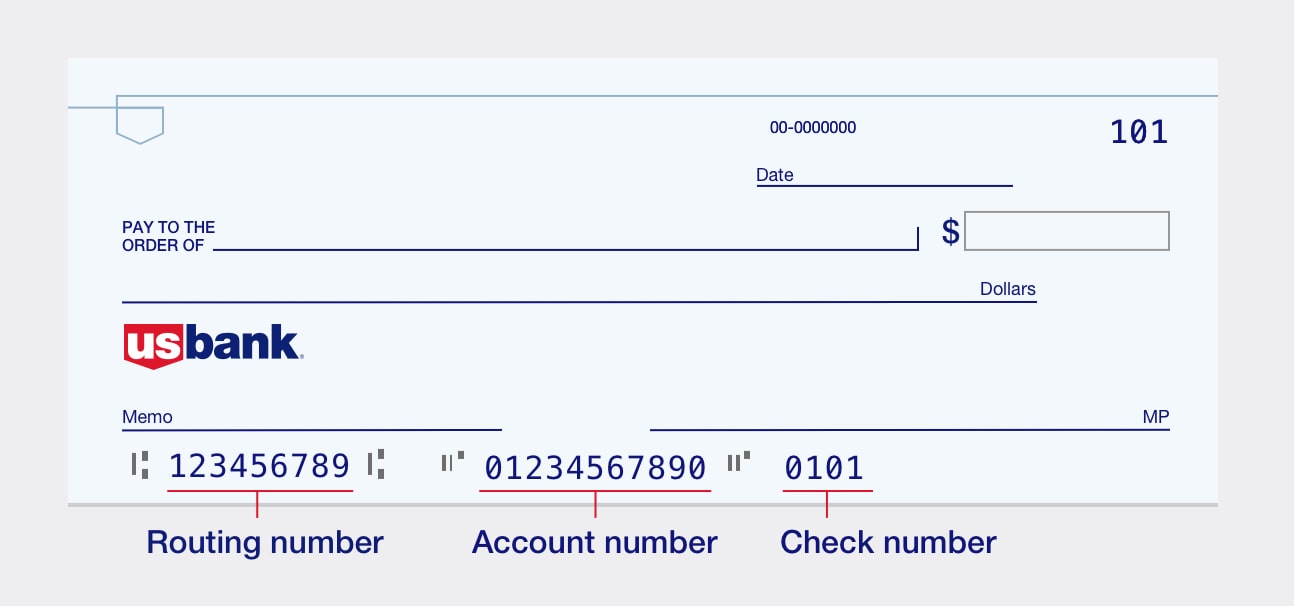Introduction
Fintech, short for financial technology, is revolutionizing the way banking services are conducted. As technology advances and consumer expectations evolve, traditional banking is being challenged by innovative fintech startups that offer more convenient, efficient, and personalized financial solutions. Fintech is reshaping the banking landscape, providing consumers with new options and financial institutions with opportunities to streamline operations and improve customer experience.
With the rise of smartphones and the internet, people are becoming increasingly reliant on digital tools for various aspects of their lives, including banking. Fintech merges finance and technology, leveraging cutting-edge advancements to deliver financial products and services that are accessible anytime, anywhere.
The advent of fintech can be attributed to several factors. First, the digital transformation of the financial industry has created new opportunities for startups to challenge traditional banking practices. Second, consumers’ changing expectations and preferences for seamless digital experiences have accelerated the demand for more user-friendly banking solutions. Lastly, regulatory reforms have opened up space for fintech companies to operate and compete in the financial services sector.
This article delves into the disruptive power of fintech in the banking industry, exploring the areas where it is making a significant impact and the challenges it faces. We will examine how fintech is shaping the future of banking and the benefits it offers to consumers and financial institutions alike. Additionally, we will consider the regulatory and security concerns that arise with the use of fintech, ensuring that while technological advancements are embraced, the integrity of financial systems remains intact.
What is Fintech?
Fintech, a portmanteau of “financial technology,” refers to the innovative use of technology to deliver financial products and services. It is a rapidly growing sector that combines finance and technology to transform how financial transactions and services are conducted.
Fintech encompasses a wide range of applications, including mobile banking, digital payments, robo-advisory services, peer-to-peer lending, blockchain technology, and more. By leveraging cutting-edge technologies such as artificial intelligence, big data, and cloud computing, fintech startups aim to disrupt traditional banking practices and offer more convenient, efficient, and personalized financial solutions.
The main goal of fintech is to enhance the accessibility, speed, and security of financial services. It aims to provide consumers with greater financial control and flexibility by removing barriers typically associated with traditional banking, such as physical branches, lengthy approval processes, and limited banking hours.
One of the key characteristics of fintech is its customer-centric approach. Fintech startups often prioritize user experience, offering intuitive and user-friendly platforms or applications that make financial management easier and more convenient. These platforms allow individuals to carry out financial transactions, monitor their accounts, invest, save, and access a wide range of financial products and services—all from the convenience of their smartphones or computers.
Fintech is not limited to startups. Traditional financial institutions are also embracing fintech to stay competitive and provide innovative services to their customers. Banks and other financial institutions are investing in digital transformation initiatives, adopting fintech technologies to streamline operations, improve efficiency, and offer new digital products and services.
Overall, fintech represents a paradigm shift in the financial industry, transforming the way we interact with money and access financial services. It offers new possibilities and opportunities for individuals and businesses to manage their finances more effectively, making financial services more inclusive, efficient, and tailored to the needs of the digital age.
The Rise of Fintech in Banking
Fintech has experienced a remarkable rise in popularity and prominence in the banking industry over the past decade. As technology continues to evolve and customers demand more convenient and accessible financial services, traditional banks are facing increasing competition from fintech startups.
Several factors have contributed to the rapid rise of fintech in banking. Firstly, the proliferation of smartphones and the widespread internet connectivity has significantly impacted the way people interact with their finances. Consumers now expect to have instant access to their accounts, make transactions on-the-go, and have seamless digital experiences when it comes to banking. Fintech companies have stepped in to meet these expectations by offering mobile banking apps and online platforms that provide convenient and user-friendly financial services.
Moreover, fintech has gained momentum due to the changing demographics and behaviors of customers. Millennials, who are known for their tech-savviness and preference for digital solutions, are forming a significant portion of the customer base for financial institutions. This demographic shift has pushed banks to adopt fintech solutions to attract and retain these digitally-oriented customers.
Another factor fueling the rise of fintech in banking is the potential for cost savings and increased efficiency. Traditional banks often have complex and expensive infrastructures, including physical branches and legacy systems. Fintech companies, on the other hand, can leverage technology to streamline processes, reduce overhead costs, and offer competitive pricing to customers. This has compelled traditional banks to partner with fintech startups or develop their own fintech capabilities to stay relevant and agile in the evolving financial landscape.
Furthermore, regulatory changes have also played a role in shaping the rise of fintech in banking. In many countries, regulators have sought to foster competition and innovation in the financial sector by creating favorable regulatory environments for fintech startups. These regulatory reforms have allowed fintech companies to enter the market more easily and offer a wider range of financial products and services.
The rise of fintech in banking is not without its challenges. Traditional banks may face difficulties in adapting their existing infrastructure to integrate with fintech innovations. Moreover, concerns around data security, privacy, and regulatory compliance can act as barriers for both fintech startups and traditional banks alike. However, despite these challenges, the rise of fintech presents a significant opportunity for banks to embrace digital transformation and cater to the changing needs and preferences of their customers.
Fintech vs Traditional Banking
The rise of fintech has introduced a new player in the financial industry, challenging the traditional banking model. Fintech startups offer a range of innovative financial products and services that aim to disrupt traditional banking practices. Here, we explore the key differences between fintech and traditional banking and how they impact consumers and the overall banking landscape.
1. Accessibility and Convenience:
Fintech companies leverage technology to offer accessible and convenient financial services. Users can access their accounts, make transactions, and manage their finances anytime and anywhere through mobile applications and online platforms. Traditional banking, on the other hand, typically relies on physical branches and limited hours of operation, making it less convenient for customers.
2. Cost and Pricing:
Fintech startups often have lower overhead costs compared to traditional banks. Without the need for physical branches, fintech companies can offer competitive pricing to customers. Traditional banks, on the other hand, may have higher fees and charges due to the maintenance and operation of physical infrastructure.
3. Personalization and User Experience:
Fintech companies prioritize user experience and personalization. They leverage technologies like artificial intelligence and big data to analyze user behavior and preferences, offering tailored financial solutions and recommendations. Traditional banks may struggle to match this level of personalization due to their size and legacy systems.
4. Product Range and Innovation:
Fintech startups are known for their innovative approach to financial products and services. They are quick to introduce new solutions that cater to emerging customer needs and market trends. Traditional banks, while offering a wide range of products, may have a slower pace of innovation and may be limited by their existing infrastructure.
5. Trust and Security:
Traditional banks have built a reputation and trust over the years, offering customers a sense of security through measures such as deposit insurance and strict regulatory oversight. Fintech startups, on the other hand, need to earn the trust of customers by implementing robust data security measures and complying with regulations to ensure the safety of customers’ financial information.
While fintech presents several advantages over traditional banking, it’s important to note that there is still a place for both in the financial industry. Traditional banks have the advantage of trust and established customer relationships, while fintech companies offer innovation and convenience. As the industry continues to evolve, we can expect to see collaboration and partnerships between traditional banks and fintech startups, leading to a hybrid model that combines the best of both worlds.
How Fintech Is Changing the Banking Landscape
Fintech is revolutionizing the banking industry, bringing about significant changes to the traditional banking landscape. Here are some ways in which fintech is reshaping the way financial services are provided:
1. Digital Transformation:
Fintech is driving the digital transformation of the banking industry. Traditional banks are adopting fintech technologies to digitize their operations, offering online banking platforms, mobile apps, and digital payment solutions. This shift towards digitization enables customers to have instant access to their accounts, perform transactions, and access a wide range of financial services, increasing convenience and efficiency.
2. Enhanced Customer Experience:
Fintech companies prioritize customer experience, aiming to deliver seamless and personalized financial services. Through innovative technologies like artificial intelligence and machine learning, fintech startups can analyze customer data to offer tailored solutions and recommendations. This personalization enhances the overall customer experience, fostering better engagement and loyalty.
3. Accessibility for the Unbanked:
Fintech is making financial services more accessible to the unbanked population. Traditional banking often requires extensive documentation and physical presence, making it difficult for individuals in remote areas or those without proper identification to access financial services. Fintech solutions, such as mobile banking and digital wallets, enable these individuals to perform basic financial transactions, access credit, and manage their finances without the need for a traditional bank account.
4. Disintermediation of Services:
Fintech startups are challenging the role of traditional intermediaries in financial services. Peer-to-peer lending platforms, for example, connect borrowers directly with lenders, bypassing the need for traditional banks as intermediaries. This disintermediation removes barriers, simplifies processes, and can lead to lower costs for both borrowers and lenders.
5. Alternative Credit Scoring:
Fintech is changing the way creditworthiness is evaluated through alternative credit scoring methods. Traditional banks primarily rely on credit scores from credit bureaus, which can be limiting for individuals with limited credit histories. Fintech startups leverage alternative data sources, including social media activity, digital footprints, and transactional data, to assess creditworthiness and offer financial services to underserved populations.
6. Collaboration with Traditional Banks:
Fintech and traditional banks are increasingly collaborating to leverage each other’s strengths. Traditional banks partner with fintech startups to enhance their digital capabilities and offer innovative financial solutions. These collaborations enable traditional banks to tap into fintech’s technological expertise, while fintech companies can benefit from the established infrastructure and customer base of traditional banks.
Fintech is a driving force behind the transformation of the banking industry. Its focus on digitalization, enhanced customer experience, accessibility, and collaboration is reshaping traditional banking practices. As fintech continues to evolve, it will continue to disrupt the banking landscape, pushing the boundaries of innovation and empowering customers with innovative financial solutions.
The Benefits of Fintech in Banking
Fintech brings numerous benefits to the banking industry, revolutionizing the way financial services are offered and consumed. These benefits have a significant impact on both consumers and financial institutions. Here are some key advantages of fintech in banking:
1. Enhanced Accessibility and Convenience:
Fintech has made banking more accessible and convenient. With mobile banking apps and online platforms, customers can access their accounts, perform transactions, and manage their finances anytime and anywhere. This eliminates the need to visit physical branches, saving time and effort for customers.
2. Personalized Financial Solutions:
Fintech leverages technological advancements such as artificial intelligence and big data analytics to offer personalized financial solutions. By analyzing customer data and behavior patterns, fintech companies can recommend tailored products and services that meet the individual needs and preferences of customers. This personalization enhances customer experience and satisfaction.
3. Cost Savings:
Fintech introduces cost-efficient solutions for both customers and financial institutions. With reduced overhead costs compared to traditional banks, fintech startups can offer competitive pricing and lower fees to customers. This cost-effectiveness enables customers to access financial services at lower costs and allows financial institutions to streamline their operations and generate savings.
4. Expanded Access to Financial Services:
Fintech has the potential to reach underserved populations and provide them with access to financial services. Through mobile banking and digital wallets, individuals who may not have access to traditional banking services can perform basic financial transactions, access credit, and manage their finances. Fintech’s inclusivity helps bridge the gap and promote financial empowerment.
5. Innovation and Product Diversity:
Fintech drives innovation in the financial industry, introducing new products and services that cater to emerging needs and trends. From robo-advisory platforms to peer-to-peer lending solutions, fintech startups offer a diverse range of innovative financial tools. This fosters healthy competition and encourages traditional banks to adopt new technologies and improve their product offerings.
6. Streamlined Processes:
Fintech technologies streamline the banking processes, making them more efficient and hassle-free. Automated systems and digital workflows reduce manual intervention, minimizing the possibility of errors and improving the speed of transactions and other banking services. This increased efficiency benefits both customers and financial institutions, saving time and resources.
7. Financial Education and Empowerment:
Fintech platforms often include educational resources and tools that promote financial literacy and empowerment. Users can access information about budgeting, investing, and financial planning, empowering them to make informed decisions about their money. Fintech’s focus on education helps individuals improve their financial well-being and create a better financial future.
Overall, fintech brings a multitude of benefits to the banking industry. It enhances accessibility, personalization, cost savings, and innovation, while also promoting financial inclusivity and empowerment. As fintech continues to evolve, these benefits will continue to shape the banking landscape and provide customers with enhanced financial experiences.
Challenges Faced by Fintech Startups in Banking
Fintech startups in the banking industry face several challenges as they disrupt traditional banking practices and strive to establish themselves in the market. These challenges can impact their growth, sustainability, and ability to effectively compete with established financial institutions. Here are some of the key challenges faced by fintech startups in banking:
1. Regulatory Compliance:
Complying with regulatory requirements is a significant challenge for fintech startups. Financial services are heavily regulated to ensure consumer protection, privacy, and security. Navigating through complex regulations, obtaining the necessary licenses, and meeting compliance standards can be time-consuming and resource-intensive for fintech companies.
2. Security and Privacy Concerns:
Fintech startups handle sensitive customer data, making security and privacy a top concern. Protecting customer information against cyberattacks and maintaining data privacy is crucial. Fintech companies must invest in robust security measures, stay up-to-date with evolving security threats, and build trust with customers by demonstrating their commitment to data protection.
3. Funding and Capital Constraints:
Fintech startups often face challenges in securing sufficient funding and capital to scale their operations. Investors may be hesitant to back early-stage fintech companies due to the perceived risks and uncertainties associated with disruptive technologies. Lack of funding can hinder the development and growth of fintech startups, limiting their ability to compete with traditional banks.
4. Building Trust and Credibility:
Gaining customer trust and establishing credibility in the financial industry can be a hurdle for fintech startups. Some customers may be hesitant to adopt new platforms and entrust their financial transactions to relatively unknown players. Fintech companies must actively demonstrate their reliability, security measures, and adherence to regulatory standards to build trust and attract a loyal customer base.
5. Integration with Legacy Systems:
Fintech startups may face challenges when integrating their innovative technologies with existing legacy systems. Traditional banks often have complex and outdated infrastructure that may not easily accommodate fintech solutions. This integration challenge can slow down the implementation and scalability of fintech products, creating hurdles for startups seeking to disrupt the industry.
6. Competition from Incumbents:
Established financial institutions, such as banks, have recognized the potential of fintech and are adopting their own digital strategies and innovations. This competition from incumbents can pose a challenge for fintech startups, as traditional banks have significant resources, customer bases, and brand recognition. Startups must differentiate their offerings, provide unique value propositions, and outpace incumbents’ ability to adapt to stay competitive.
7. Changing Consumer Behavior:
Consumer behavior and preferences are continually evolving, and fintech startups must keep up with these changes. Understanding and catering to customer expectations and demands can be challenging as evolving technologies and market dynamics reshape customer behavior. Fintech companies must adapt quickly, offer a seamless user experience, and anticipate and respond to customer needs to stay relevant in a rapidly changing landscape.
Despite these challenges, fintech startups in banking continue to innovate and disrupt the industry. Overcoming these hurdles requires a combination of technological expertise, regulatory compliance, strategic partnerships, and customer-centric approaches to succeed in an increasingly competitive environment.
Key Areas Where Fintech Is Making an Impact in Banking
Fintech is disrupting the banking industry across various key areas, revolutionizing how financial services are accessed and experienced. Here are some of the key areas where fintech is making a significant impact:
1. Mobile Banking and Digital Payments:
Fintech has transformed the way people manage their finances through mobile banking apps and digital payment solutions. Users can access their accounts, make transactions, transfer funds, and pay bills conveniently and securely from their smartphones. This shift to mobile banking has made financial services more accessible, allowing customers to conduct banking transactions anytime and anywhere.
2. Robo-Advisory and Wealth Management:
Fintech has introduced robo-advisory platforms that use algorithms and automation to provide low-cost, customized investment advice. These platforms offer portfolio management services, smart asset allocation, and personalized investment recommendations based on user preferences and risk tolerance. Robo-advisory has democratized wealth management, making it accessible to a broader range of individuals.
3. Peer-to-Peer Lending and Crowdfunding:
Fintech has facilitated peer-to-peer lending platforms that connect borrowers directly with lenders, eliminating the need for traditional intermediaries. Peer-to-peer lending provides alternative financing options for individuals and small businesses, offering lower interest rates and faster approval processes. Additionally, crowdfunding platforms enable startups and entrepreneurs to raise capital from a large number of individuals, revolutionizing the way businesses access funding.
4. Blockchain and Cryptocurrencies:
Fintech has introduced blockchain technology, a decentralized and tamper-proof digital ledger, which has the potential to transform various aspects of banking. Blockchain enables faster, more secure, and transparent transactions, reducing costs and eliminating the need for intermediaries. Furthermore, cryptocurrencies like Bitcoin have emerged as an alternative digital currency that enables borderless and instant transactions, challenging traditional fiat currencies.
5. Artificial Intelligence and Chatbots in Customer Service:
Fintech leverages artificial intelligence and chatbot technologies to enhance customer service in banking. AI-powered chatbots provide instant and personalized assistance to customers, addressing their queries, managing complaints, and even offering financial advice. These chatbots are available 24/7, ensuring efficient and timely customer support, saving time and resources for both customers and financial institutions.
6. Regulatory and Compliance Solutions:
Fintech is also impacting banking through the development of regulatory and compliance solutions. Startups are leveraging technology to automate and streamline regulatory processes, ensuring compliance with stringent financial regulations. These solutions help financial institutions manage risk, detect fraud, and enhance regulatory reporting, leading to improved efficiency and reducing the burden of compliance.
Overall, fintech is making a profound impact across various key areas in banking. From mobile banking and digital payments to robo-advisory, peer-to-peer lending, blockchain, and AI-powered customer service, fintech is transforming the way financial services are accessed, delivered, and experienced. As the fintech industry continues to evolve, these key areas will continue to revolutionize banking and shape the future of financial services.
Mobile Banking and Digital Payments
One of the key areas where fintech is making a significant impact in banking is through mobile banking and digital payments. Fintech has transformed how individuals and businesses manage their finances by providing convenient, secure, and accessible banking services through mobile applications and digital payment solutions.
With the widespread adoption of smartphones and improved internet connectivity, mobile banking has become increasingly popular. Users can now access their bank accounts, check balances, review transaction history, transfer funds between accounts, and pay bills conveniently from their mobile devices. Mobile banking apps offer a seamless and user-friendly interface, providing users with real-time access to their financial information and empowering them to manage their finances on the go.
In addition to mobile banking, fintech has revolutionized digital payments. Traditional cash and cheque payments are being increasingly replaced by digital payment solutions, offering convenience, security, and speed. Fintech startups have introduced various digital payment methods, including mobile wallets, contactless payments, online payment gateways, and peer-to-peer payment platforms.
Mobile wallets are a popular digital payment solution, allowing users to store their debit, credit, or prepaid card information on their smartphones. Users can make purchases in physical stores or online by simply tapping their devices or scanning a QR code. Mobile wallets provide a convenient and secure way to pay for goods and services without the need to carry physical cards or cash.
Contactless payments have also gained traction in recent years. Through near field communication (NFC) technology, users can make payments by simply waving their smartphones or contactless payment cards near a compatible payment terminal. Contactless payments offer a quick and seamless checkout experience, reducing transaction times and enhancing convenience for both customers and merchants.
Online payment gateways enable businesses to accept payments electronically through their websites or mobile applications. Fintech companies offer secure and reliable payment gateways that facilitate online transactions, eliminating the need to handle cash or rely on manual invoicing. This has opened up new opportunities for e-commerce businesses and streamlined the payment process for online shoppers.
Peer-to-peer payment platforms have transformed how individuals transfer money to friends, family, or acquaintances. These platforms allow users to send money to other users instantly, often utilizing mobile phone numbers or email addresses as identifiers. Peer-to-peer payment solutions have made splitting bills, repaying debts, or sending gifts quick and hassle-free.
Overall, mobile banking and digital payments have revolutionized the way financial transactions are conducted. Fintech companies have leveraged technology to make banking services more accessible, convenient, and secure than ever before. From mobile banking apps to digital payment methods, fintech has empowered individuals and businesses to manage their finances seamlessly, enhancing the overall banking experience for users around the world.
Robo-Advisory and Wealth Management
Robo-advisory and wealth management are key areas within the fintech landscape that have transformed the way individuals manage their investments and financial assets. Fintech startups have introduced innovative platforms that leverage automation, algorithms, and artificial intelligence to provide personalized investment advice and portfolio management services to a broader range of individuals.
Traditionally, wealth management services were primarily accessible to high-net-worth individuals and required significant investment capital. However, robo-advisory platforms have democratized wealth management, allowing individuals with lower investment thresholds to access professional investment advice and portfolio management at a fraction of the cost.
Robo-advisory platforms use algorithms and data analysis to assess an investor’s financial goals, risk tolerance, and other relevant factors, allowing for the creation of personalized investment strategies. Through a series of automated processes, robo-advisors recommend suitable investment options, asset allocations, and rebalance portfolios as market conditions and investor objectives change.
One of the key advantages of robo-advisory is its ability to provide diversified investment portfolios tailored to individual needs. By leveraging algorithms and advanced investment strategies, robo-advisors can offer diversified portfolios that align with an investor’s goals and risk tolerance. This can significantly enhance investment outcomes and improve long-term returns.
Robo-advisory platforms also offer transparency and accessibility. Through intuitive user interfaces, investors can easily access their portfolios, view performance reports, monitor market trends, and make adjustments as needed. The ease of use and real-time access to investment information empower investors to stay informed and make well-informed investment decisions.
Furthermore, robo-advisory platforms often have lower fees compared to traditional wealth management services. By leveraging technology and automation, these platforms can offer their services at a fraction of the cost of a human financial advisor. This cost advantage makes it more affordable for individuals with smaller investment portfolios to access professional investment advice and management services.
It is important to note that robo-advisory does not eliminate the need for human involvement completely. While robo-advisory platforms provide algorithm-driven investment advice and portfolio management, they often offer access to human advisors for additional guidance and support. This hybrid model allows investors to strike a balance between technology-driven efficiency and personalized human interaction.
Overall, robo-advisory and wealth management platforms have significantly disrupted the traditional wealth management industry. Fintech companies have introduced innovative solutions that enable individuals with various investment levels to access professional investment advice, diversified portfolios, and transparent performance tracking. As technology continues to advance and investor appetite for digital wealth management solutions grows, robo-advisory is expected to become even more prevalent in the financial industry.
Peer-to-Peer Lending and Crowdfunding
Peer-to-peer (P2P) lending and crowdfunding are innovative fintech solutions that have revolutionized the way individuals and businesses access financing and capital. These platforms connect borrowers directly with lenders or investors, eliminating the need for traditional intermediaries such as banks. Through P2P lending and crowdfunding, fintech has created new avenues for raising and investing money.
P2P lending platforms enable individuals and small businesses to borrow money directly from investors, cutting out the traditional banking system. Borrowers can create loan listings with their desired loan amount and purpose, and investors can choose to fund these loans based on their risk appetite and return expectations. P2P lending offers borrowers an alternative financing option with potentially lower interest rates and more flexible terms compared to traditional bank loans.
Crowdfunding platforms, on the other hand, provide a mechanism for businesses, entrepreneurs, and creative projects to raise capital from a large number of individuals, or “crowd.” These platforms allow individuals to contribute varying amounts to support a particular venture or project. In return, investors may receive equity, rewards, or a stake in the project’s success.
Both P2P lending and crowdfunding have democratized access to funding for individuals and businesses that may have struggled to secure financing through traditional channels. Fintech platforms have made it easier for borrowers with lower credit scores or non-traditional income sources to access capital. Similarly, crowdfunding has provided a new means for startups, social enterprises, and artists to gain financial support and bring their ideas to life.
P2P lending and crowdfunding offer several advantages over traditional financing methods. They provide increased transparency, as borrowers and lenders can directly communicate and negotiate loan terms or investment terms. Additionally, these platforms often have simplified application processes, faster approval times, and reduced administrative overhead compared to traditional lending or investment channels.
For investors, P2P lending and crowdfunding platforms offer opportunities to diversify their investment portfolios. Instead of relying solely on stocks, bonds, or real estate, investors can allocate funds to P2P loans or crowdfunding projects, potentially yielding higher returns and spreading out their risk.
However, it is important to note that P2P lending and crowdfunding also come with certain risks. Borrowers may default on loans, leading to potential losses for investors, and crowdfunding projects may not always reach their intended goals or deliver expected returns. Investors and borrowers should carefully evaluate the risks and conduct due diligence before participating in P2P lending or crowdfunding campaigns.
Overall, P2P lending and crowdfunding have disrupted traditional financing models, providing alternative channels for borrowing and investing. Fintech platforms have opened up new opportunities for individuals and businesses to access capital and financial support, broadening the financial landscape and making it more inclusive.
Blockchain and Cryptocurrencies
Blockchain technology and cryptocurrencies have emerged as disruptive fintech innovations that are transforming the way financial transactions are conducted and recorded. Blockchain, a decentralized and tamper-proof digital ledger, serves as the underlying technology for cryptocurrencies and offers numerous applications within the financial industry.
Blockchain technology provides a secure and transparent way to record and verify transactions. It operates on a distributed network of computers, known as nodes, where each transaction is recorded in a block and linked with previous blocks, forming a chain of transactions. This decentralized nature makes it difficult for any single entity to manipulate or alter the records, enhancing security and trust in financial transactions.
Cryptocurrencies are digital currencies that leverage blockchain technology to enable secure and decentralized transactions. Bitcoin, the first and most well-known cryptocurrency, introduced the concept of peer-to-peer electronic cash, allowing individuals to transfer funds directly without intermediaries. Since then, numerous other cryptocurrencies have been developed, each with its own unique features and applications.
One of the key advantages of blockchain and cryptocurrencies is the potential to streamline cross-border transactions. Traditional cross-border transactions often involve multiple intermediaries, lengthy processing times, and high fees. Blockchain technology eliminates the need for intermediaries, enabling faster and more cost-effective international transactions.
Cryptocurrencies also offer financial inclusion, particularly for individuals who may not have access to traditional banking services. With a smartphone and internet connection, anyone can create a digital wallet and participate in cryptocurrency transactions. This opens up financial opportunities for the unbanked and underbanked populations, providing them with secure means of storing and transferring value.
Blockchain technology has applications beyond cryptocurrencies. It can be utilized for various financial services, such as smart contracts, which automatically execute contractual agreements based on pre-programmed conditions. Smart contracts offer efficiency, automation, and transparency in areas such as insurance, supply chain management, and financial agreements.
However, the adoption of blockchain and cryptocurrencies also faces challenges. Scalability and energy consumption are significant concerns, as blockchain networks require substantial computational power and energy to validate and process transactions. Regulatory frameworks and legal uncertainties also pose challenges, as governments grapple with how to regulate and monitor cryptocurrencies and blockchain-based transactions.
Despite these challenges, blockchain technology and cryptocurrencies continue to gain traction and evolve. Financial institutions are exploring the use of blockchain for secure and efficient transactions, while cryptocurrencies are gaining acceptance as an alternative investment asset class. The ongoing development and integration of blockchain and cryptocurrencies have the potential to reshape financial systems, increase transaction transparency, and empower individuals with greater control over their finances.
Artificial Intelligence and Chatbots in Customer Service
Artificial intelligence (AI) and chatbot technologies have revolutionized customer service in the banking industry. Fintech companies are leveraging AI-powered chatbots to provide efficient, personalized, and round-the-clock customer support, enhancing the overall customer experience.
Chatbots are computer programs designed to simulate human conversation. By using natural language processing and machine learning algorithms, chatbots can understand and respond to customer inquiries or requests in a conversational manner. These AI-powered chatbots are capable of handling a wide range of customer queries, from account balances and transaction histories to product information and troubleshooting.
The use of chatbots in customer service offers several advantages. Firstly, they provide instant and 24/7 support, ensuring that customers receive prompt assistance at any time. This eliminates the need to wait for human agents during business hours and improves customer satisfaction by providing immediate responses to inquiries.
Additionally, AI-powered chatbots can handle a large volume of customer inquiries simultaneously, improving efficiency and reducing customer wait times. They can efficiently process and respond to common customer queries, freeing up human agents to focus on more complex or specialized tasks.
Moreover, chatbots offer personalized customer experiences by leveraging customer data and preferences. Through machine learning algorithms, chatbots can analyze customer interactions and tailor responses based on individual needs. This personalization enhances customer engagement, fosters positive brand experiences, and ultimately strengthens customer loyalty.
AI-powered chatbots can also help in cross-selling and up-selling financial products and services. By leveraging customer data and transaction history, chatbots can provide relevant recommendations and offers to customers, promoting additional products or services that may be of interest to them. This proactive approach enhances sales opportunities and revenue generation for financial institutions.
However, it is essential to strike a balance between chatbot interactions and human involvement. While chatbots excel in handling routine inquiries, there are situations that require human empathy and understanding. If a chatbot encounters a complex issue or a customer expresses discontent, seamless transfer to a human agent ensures a seamless customer experience and builds trust.
Additionally, chatbots need continual monitoring, updating, and refinement to improve performance and customer satisfaction. Fintech companies should invest in ongoing training and data analysis to ensure chatbots stay up to date with evolving customer needs and preferences.
Overall, AI and chatbot technologies have transformed customer service in the banking industry. With their ability to provide instant support, personalized experiences, and efficient handling of customer inquiries, chatbots have become valuable tools for enhancing customer satisfaction and engagement. The integration of AI-powered chatbots enables financial institutions to provide efficient and effective customer service, ultimately improving their competitive position in the market.
Regulatory and Security Concerns in Fintech
As fintech continues to disrupt the financial industry, regulatory and security concerns have emerged as significant challenges. These concerns revolve around ensuring consumer protection, maintaining data privacy, and mitigating the risk of financial crimes. Here are some of the key regulatory and security concerns in fintech:
1. Compliance with Regulations:
Fintech startups must navigate complex regulatory frameworks to ensure compliance with financial regulations. Depending on the jurisdiction, fintech companies may need licenses and permits to operate legally. Compliance with regulatory requirements related to consumer protection, money laundering, data security, and anti-terrorism financing is essential to maintain the integrity of the financial system.
2. Privacy and Data Security:
Fintech companies collect and process large amounts of user data, raising concerns about privacy and data security. It is crucial for fintech startups to implement robust security measures to protect customer data from cyberattacks, data breaches, and unauthorized access. Compliance with data protection laws such as the General Data Protection Regulation (GDPR) is essential to safeguard customer privacy and earn consumer trust.
3. Financial Crime Prevention:
Fintech companies must proactively combat financial crimes such as money laundering and fraud. They are responsible for establishing adequate risk management systems and implementing Know Your Customer (KYC) and Anti-Money Laundering (AML) procedures. Striking a balance between preventing financial crimes while maintaining a frictionless user experience is essential to build trust and ensure compliance with regulations.
4. Cross-Border Regulations:
Fintech operates in a global context, and cross-border regulations can pose challenges. Different jurisdictions may have varying regulations regarding financial services, data protection, and consumer rights. Fintech startups expanding into new markets must carefully navigate these cross-border regulations to ensure compliance and avoid legal complexities.
5. Systemic Risks and Stability:
The growth of fintech introduces new systemic risks that need to be monitored and managed. The interconnectedness of fintech platforms and traditional financial institutions may impact market stability in case of disruptions or failures. Regulators must assess and monitor these risks to maintain the stability of the financial system.
6. Consumer Protection:
Consumer protection is a key focus area in fintech. Regulatory oversight is necessary to protect consumers from unfair practices, deception, and abuse of financial services. Regulations related to disclosure requirements, dispute resolution mechanisms, and fair lending practices are crucial to ensure consumer confidence in fintech services.
Addressing these regulatory and security concerns requires collaboration between fintech companies, regulators, and industry stakeholders. Fintech startups must prioritize compliance, implement robust security measures, and adhere to industry best practices. Regulatory bodies need to strike a balance between fostering innovation and protecting consumers, adapting regulations to the evolving fintech landscape.
Overall, as fintech continues to evolve, regulatory and security concerns play a vital role in shaping its growth and acceptance. By addressing these concerns effectively, fintech can continue to innovate and transform the financial industry while maintaining the trust, security, and stability of the global financial system.
Conclusion
Fintech has significantly disrupted the banking industry, reshaping how financial services are offered and consumed. It has introduced innovative solutions that enhance accessibility, convenience, and personalization, empowering individuals and businesses with more control and flexibility in managing their finances.
From mobile banking and digital payments to robo-advisory and peer-to-peer lending, fintech has transformed key areas of banking, making financial services more accessible, efficient, and inclusive. It has democratized wealth management, providing individuals with lower investment thresholds access to personalized investment advice and portfolio management.
Blockchain and cryptocurrencies have introduced decentralization and secure digital transactions, offering potential for streamlined cross-border transactions, financial inclusion, and innovative applications beyond traditional banking.
While fintech brings numerous benefits, it also faces challenges such as regulatory compliance, security risks, and customer trust. Striking a balance between innovation and regulatory compliance is crucial, as is ensuring the security and privacy of customer data.
Collaboration between fintech startups, traditional banks, regulators, and industry stakeholders is essential to address these challenges and reap the full potential of fintech. By embracing technology and adopting customer-centric approaches, financial institutions can offer seamless, personalized, and efficient services and build trust and loyalty among their customer base.
As fintech continues to evolve, it will shape the future of banking, transforming financial services and opening up new possibilities for individuals and businesses worldwide. The ongoing collaboration and adaptation will be key to harnessing the full potential of fintech and creating a robust, inclusive, and secure financial ecosystem.
























